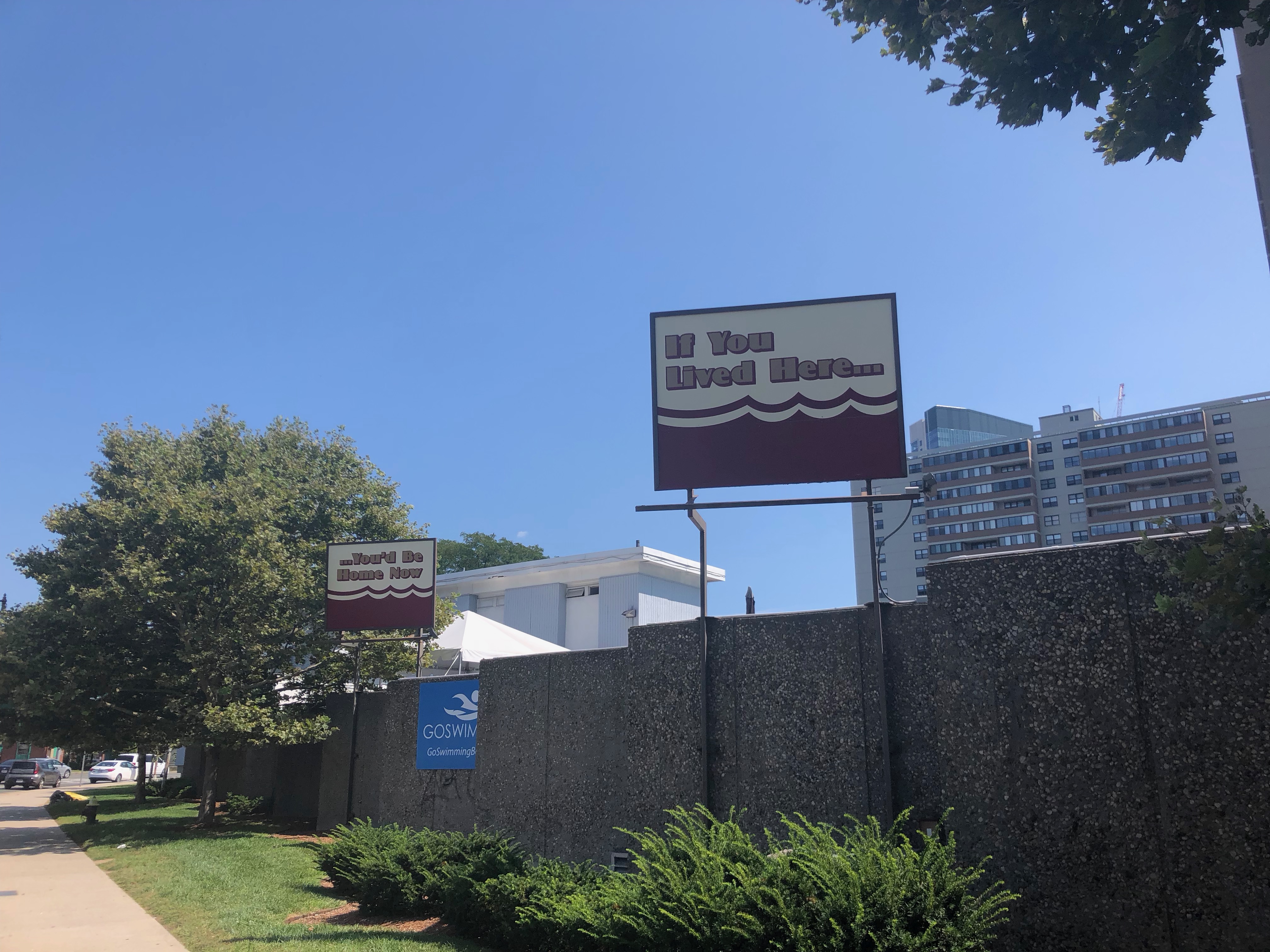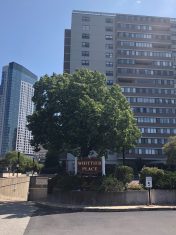Back in the 1970s, Charles River Park was more than the place where “… if you lived here you would be home now …” as the iconic sign along Storrow Drive has said for years.

During my childhood, Charles River Park was a home away from home due to the fact that my grandmother lived on the twentieth floor at Eight Whittier Place, apartment 20E.
We frequently made family trips to Boston. Traveling in could be strangely entertaining, listening to Dale Dorman on 68 WRKO before the FM radio boom, hearing songs like Paul Simon’s Fifty Ways to Leave your Lover, Why can’t we be Friends by War, and I Can Help by Billy Swan, all on fabulous AM radio.
 The lobby at Eight Whittier Place was ornately decorated with dark woods and gold. The trip up the elevators was adventurous. My dad would sometimes attempt to race us to the twentieth floor by running up the stairs as we waited for an elevator. At the time he was regularly running marathons, so such athletic endeavors were second nature.
The lobby at Eight Whittier Place was ornately decorated with dark woods and gold. The trip up the elevators was adventurous. My dad would sometimes attempt to race us to the twentieth floor by running up the stairs as we waited for an elevator. At the time he was regularly running marathons, so such athletic endeavors were second nature.
The world was a different place from the twentieth floor. My grandmother’s balcony faced east toward the harbor with a clear view of Harbor Towers, which my older sisters and I would sometimes walk down to when given special permission. As kids, my sisters and I would dare each other to hang over the balcony, a memory that still gives me obvious concern. If you looked to the right from her balcony, you could just barely see the gold dome of the State House. If you looked to the left, you might be able to see a piece of the Tobin Bridge and the Science Park T station. Looking down, you saw the playground and the sprawling walkways and gardens lined with convenient stores like Sage’s off to the right. We slept out on that balcony during the summer of 1976 when the Tall Ships came to Boston for the first time to honor the Bicentennial.
Boston was a much different city back then. You had to travel in on the old expressway (hard to believe we are already saying that) and enter the city through the old South Station tunnel. Traffic was, well, traffic. Despite the famed Big Dig, not much has changed in that regard. In the early 1970s, Faneuil Hall had yet to be renovated, but still acted as a market of sorts. My sisters and I referred to the area as “Yucky Town”, due to its dank, wharf-like, post-industrial appearance before its tourist-driven overhaul. The Bostonian Hotel had yet to be built, meaning the current Quincy Market area was regularly dominated by Haymarket vendors – a significantly larger and more calamitous event than what is currently found today.
One of the highlights of trips to Charles River Park was the expansive swimming pool that still exists behind the decorative barricade along the end of Storrow Drive. My grandmother had cabana one, which always felt preferential to me. At the time, former Red Sox pitcher Jim Lonborg was living at Eight Whittier Place and was regularly pointed out to me, a passionate young baseball fan. Being a little too young to have been directly affected by 1967s Impossible Dream season, I sadly saw Lonborg at the time as only a mediocre pitcher for the Philadelphia Phillies, according to my thorough baseball card research, and could never understand why my parents were always in awe.
Leaving Eight Whittier Place meant being greeted by a cascade of old yellow cabs at the door, which we sometimes piled into when making a trip to my grandmother’s favorite restaurant, Dini’s, on Tremont Street. We would exit the parking lot after paying at the gate and make a right turn toward Causeway Street and the old Boston Garden. Leverett Circle had a different configuration at the time, although it seemed that Charles River Park was always the focal point. That all changed during the late 1990s when the Big Dig invaded Nashua Street and Martha Road, the old Registry of Motor Vehicles was demolished, and the on-ramps and off-ramps were directed into the new tunnel instead of the old expressway.
All these years later, Charles River Park now appears to be a dated group of apartment buildings, although in accordance with the sign on Storrow Drive, a part of me would certainly be at home now if I lived there.
Jay Gillespie is a history teacher, writer, and local musician. He can be reached at readjaygillespie.blogspot.com and his music can be found on cdbaby.com.




Nice story Jay I live around the corner from Whittier place I see it mostly when I walk around there, I’m sure Boston was more unique than now keep it up.
I worked for them like 6 year’s nice place too work for kinda miss everyone if some are still there from I think 1993 too 1999
What a flash from the past. I remember that sign when heading to the Pike. Things have certainly changed. WRKO was by far the best station in Boston. WMEX was second.